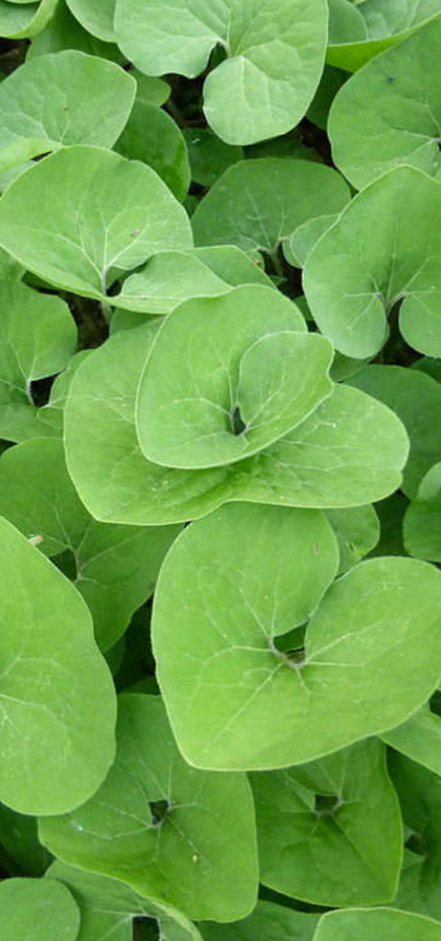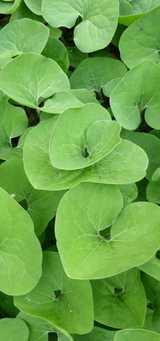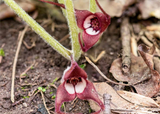- 2024 Native Trees
- >
- Herbaceous Plants
- >
- Wild Ginger (Asarum canadense)
Wild Ginger (Asarum canadense)
Height: 6 to 12 inches
Bloom Time: April to May
Bloom Description: Rusty brown, inconspicuous solitary flower
Sun: Part shade to full shade
Attracts: Atypical pollinators
Birthwort Family
Native to Jefferson County
Another early spring wildflower, Wild Ginger’s solitary flower is often overlooked. Often referred to as a “little brown jug,” hidden under leaf litter and growing at the fork between the plant’s two large and showy leaves, is a quiet little flower with an interesting story to tell.
As told by the U.S. Forest Service, “the flower evolved to attract small pollinating flies that emerge from the ground early in the spring looking for a thawing carcass of an animal that did not survive the winter. By lying next to the ground flower is readily found by the emerging flies. The color of the flower is similar to that of decomposing flesh. Whether these flies pollinate the flower or not is in some dispute. Never the less they do enter the flower to escape the cold winds of early spring and to feast upon the flowers pollen. Some of the pollen attaches to their bodies and is taken with them when they visit the next flower”.
But the story doesn’t end there!
“When the seeds finally ripen, they have a little oily food gift attached to the seed; this appendage is called an “elaiosome.” The “elaiosomes” attract ants that carry the seeds off to their underground home where they consume the tasty food and leave the seed to germinate. The ecological advantage is that the seeds are not predated upon by seed-eating animals”.
Native Americans and early settlers used the root of Wild Ginger in several ways, including as a spice, candied-root, and syrup. The root was also used in poultices to treat wounds. Since then, scientists have discovered that the plants may contain poisonous compounds so consuming them is highly discouraged! Handling the plants themselves may cause allergic dermatitis in some people.
Wild Ginger is increasing in its popularity in native landscapes as a low-growing ground cover because of its shade tolerance and interesting leaves. It does not readily self-seed, but slowly spreads by underground rhizomes. It does best in rich soils in shady deciduous forests. In our region, Wild Ginger is a host plant for the bold-feathered grass moth. ■





